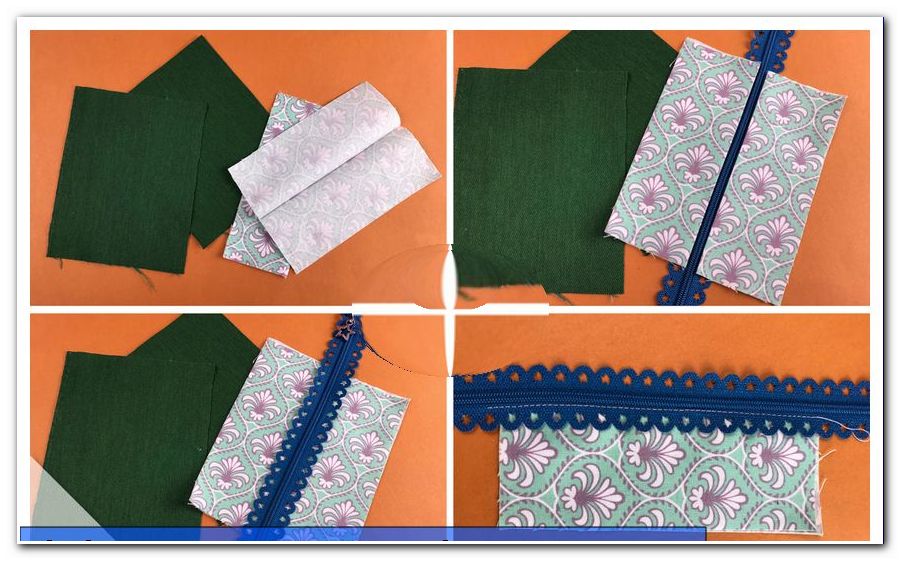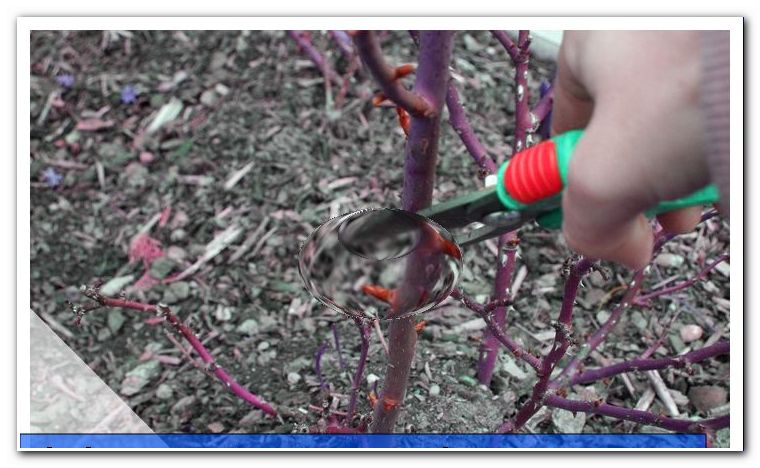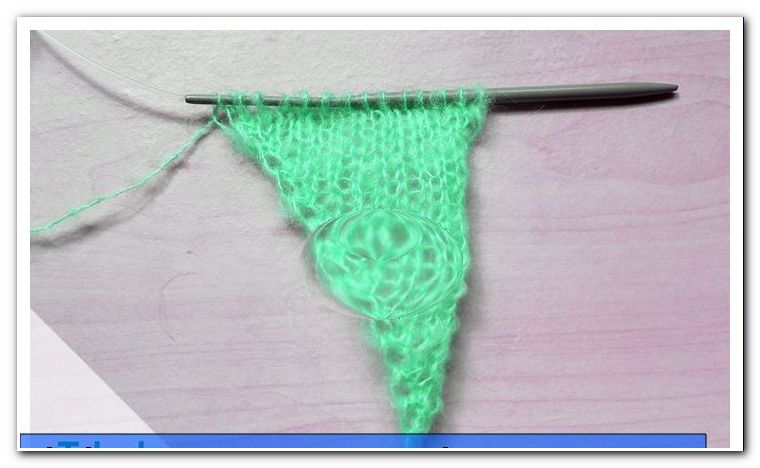Sew key bag yourself - instructions for a key case

- Material and preparation
- The material selection
- The pattern
- Sew key pocket
- variations
- Quick guide
What a key case actually ">
In this guide, I'll show you how to do just that. It is up to you whether you only want a nice storage option for your key or at the same time a small pouch for extras. The difference in sewing is marginal.
Difficulty 1.5 / 5
(best suited for beginners)
Material costs 1.5 / 5
(depending on fabric selection per key bag or key case between EUR 0, - from the remaining utilization and EUR 20, -)
Time required 1.5 / 5
(per pen bag about 1-1, 5 h)
Material and preparation
The material selection

Ideally, do not use stretchy, thin, woven fabrics such as cotton or linen weaves. Also in combination with coated fabrics. Of course you can also work with jersey, which you should reinforce in advance but necessarily with ironing insert. Especially recommended are patchwork fabrics, because they are of very high quality and you get them as perfectly coordinated series in smaller cuts under the term "Fat Quaters". You can cut all parts from the same fabric or, for the purpose of the remaining utilization, each part from another motif. Also different types of fabrics can be combined. But it is easier to sew if all the cut pieces for the key pocket are made of the same type of fabric.
In this guide, I've used two different fabrics for my key pocket, so you can better see what's up and what's below. For the top, I took a light blue-patterned patchwork fabric, for the bottom of a dark blue, thin denim. You also need a zipper with at least 15 cm in length (like a continuous zipper) and a few inches of woven tape.
The pattern
The pattern is very simple and can easily be adapted to your individual needs. I just have a rectangle with the dimensions as a basis
10 x 13 cm taken. Here are the seam allowances already included. Cut a rectangle 4 times - twice for the top of the key case and twice for the bottom.
Sew key pocket
The two tops are folded longitudinally left to left and ironed. For normal zippers, the strap edges would now be stitched to the left and right of the plastic caterpillar from the top of the zipper. But I have chosen a very nice zipper for my key pocket, which I do not want to hide, so I put my fabric under the zipper, put everything with pins and steppe first one side and then the other side.

For the bottom, I put the two rectangles left to left on top of each other (with the "nice" sides to the outside). Then I cut off the weave a longer (about 2/3 of the length of the bag) and a shorter (about 1/2 pocket length), seal the ends by "wagging" with the lighter, fold the webbing strips in the middle and put them on the left and right on the middle Height on my rectangles.

Tip: The woven tapes should be exactly in the middle of the key case. Simply fold the rectangle lengthwise and mark the center with a pin or a small snap inside the seam allowance.
In the longer "loop" I now put a key ring, before I fix both woven ribbons at the edge and stitch inside the seam allowance.

Hard to believe, but we have already done more than half of the required steps!
IMPORTANT!!! Now open the zipper at least to the middle, otherwise the key case can not be turned!
Lay the top and bottom together so that the loop with the key ring comes to rest on the side where the slide of the zipper is in the closed position. So on the page, which is now completely open.

The edges should end around as close as possible.
Tip: If you are unsure, lock the open side of the zipper with a few stitches in advance.
Stick everything well or secure all fabric layers with Wonderclips. Now sew around with normal seam allowance. To do this, use a normal straight stitch (or a triple straight stitch if the seam is to be particularly robust).
Now cut away all protruding parts - the zipper, excess threads and cut off the corners. Take care not to cut with the scissors in the seam.

Tip: For fabrics that can fray, you should now necessarily seam. This mainly concerns woven fabrics.
Now apply everything through the zipper and shape the corners nicely.
And your new key bag is done!

Have fun sewing!
variations
Bag only for keys
If you want to use your new purse exclusively for your key, you can also attach the key ring ring inside the case, so you can always close the zipper completely. Simply place the woven ribbon loop underneath the two layers for the bottom fabric. The rest of the instructions remain completely the same, except that the smaller, right loop is just as in the photo, the larger left with the key ring but left under the fabric.
Like most of the other projects, you can use the "Crazy Patchwork" to stitch different fabric remnants together and cut out your cuts. Even possible embellishments such as lace, ruffles, embroidered, plotted can be attached before sewing. Buttons, stitches, ribbons and other 3D effects are better sewed on at the end.
Also inside pockets and small rubber loops as pen holders are possible. Let your creativity take over your mind and body!
Quick guide
1. If necessary, adjust the pattern and trim four times
2. Iron upper half lengthwise left to left
3. sew the tops with the bow to the serrated caterpillar on the zipper (depending on the zipper from above or from below)
4. Sew side parts and pocket squares together right to right (turning opening!)
5. Cut the ribbons, seal the ends
6. Fold the weaving bands in the middle, thread the key ring on the longer one, then stitch in the seam allowance at medium height
7. Open the zipper!
8. Merge the top and bottom right edge to the right edge and stitch with normal seam allowance
9. Cut back seam allowances and excess material, chamfer corners
10. Turn through the zipper opening and form corners
11. Attach and fill the key
The twisted pirate




